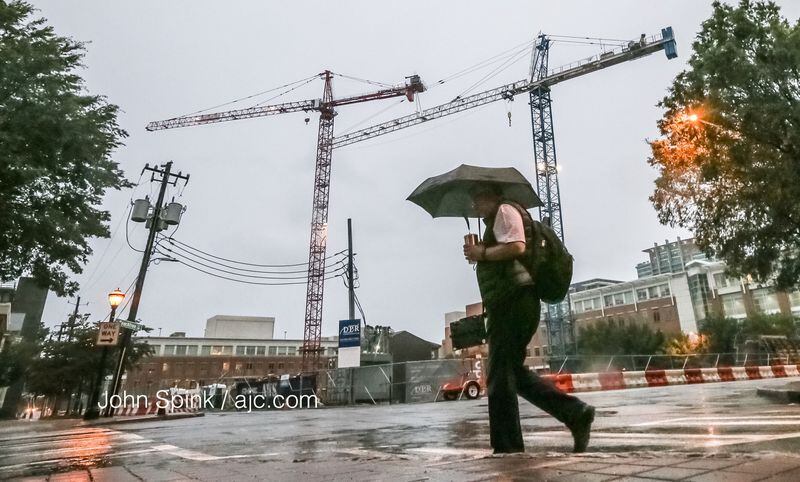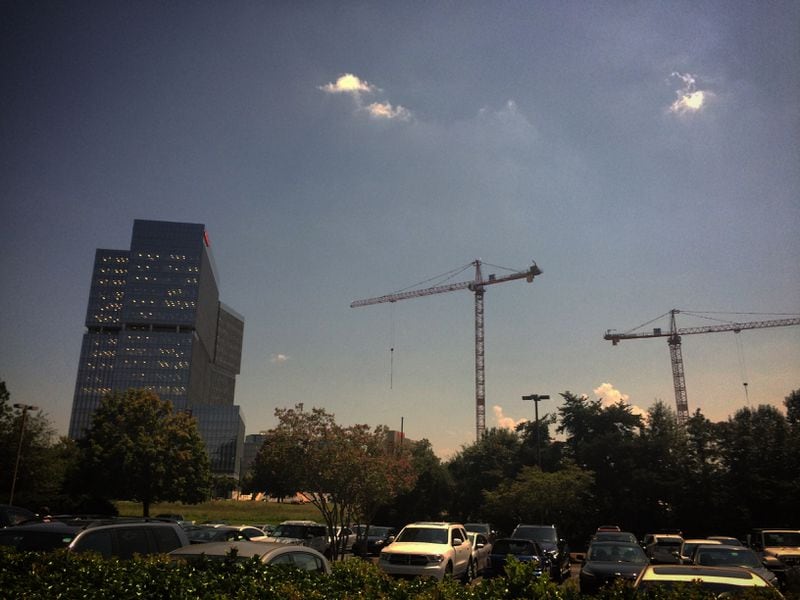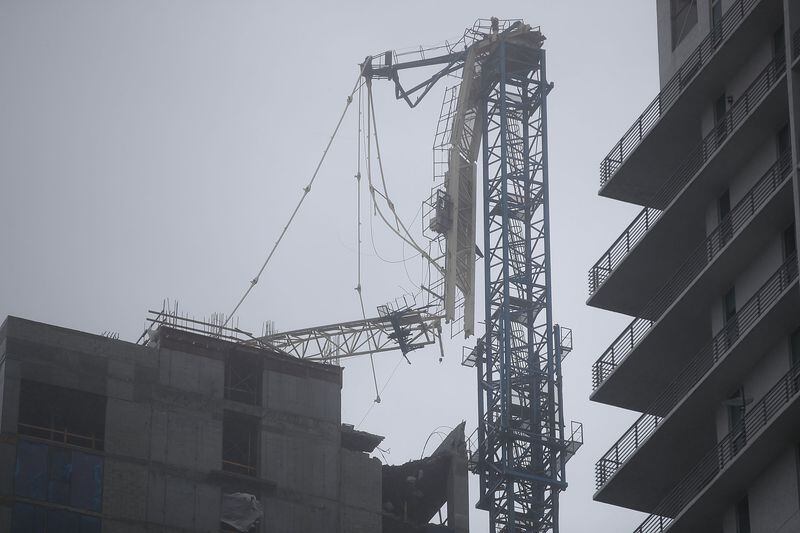Looking up in Midtown or along the Beltline near Ponce City Market, the towering sight of what’s jokingly called Atlanta’s unofficial bird — the construction crane — is hard to miss.
When Hurricane Irma slammed South Florida, turning some tower cranes into crumpled piles of twisted metal, while winds pushed others into an eerie spin, it’s only natural to wonder about the cranes hovering over Atlanta.
At least three cranes reportedly collapsed in the Miami area as of Monday morning. In the days leading up to the storm, Miami officials urged residents who lived near major construction sites to evacuate because of the risk of wind-blown debris and the uncertainty surrounding the city's cranes and winds approaching or potentially exceeding their maximum wind speed thresholds.
Irma's winds, which are expected to batter metro Atlanta with gusts potentially of 70 miles per hour or more, should be well below the designed capacity of the massive cranes, which the Associated Press reported are typically designed to withstand sustained winds well in excess of 100 miles per hour.
Ryan Saulsbury, a senior project manager at Holder Construction, the company building the massive State Farm campus in Dunwoody, said his crews started to secure the two tower cranes on the site near Perimeter Mall starting on Thursday. The Holder team removed banners from the masts and horizontal arms, and they also lowered the boom on a large mobile crane on site.
The tower cranes are built on a concrete foundation, Saulsbury said. They take a few days to erect, but far longer to take down. Saulsbury called the collapsed cranes in Miami “terribly unfortunate,” and said there just wasn’t enough time for crews there to remove them.
“Based on the forecasted winds we’re supposed to receive … the way they’re designed, the winds will be well below what their design capability are,” Saulsbury said in a Monday interview.
The winds in Miami, he said, were above those thresholds.
The cranes are designed to “weather vane” in the wind, meaning they’re supposed to spin.
Holder crews have been in communication with the crane manufacturers and their safety team to make sure the cranes are properly secured, Saulsbury said.
If people see something they think is unsafe, however, Saulsbury said residents should report the situation to authorities or to the construction companies.
Patrick Tarrant, founder and CEO of Crane Management and a licensed master rigger and crane operator, said the “weather vaning” allows the crane to survive the force heavy winds slamming the horizontal arm of the structure.
“If the crane is properly attached to the building and properly maintained there is no reason the crane will not withstand whatever forces the buildings can withstand,” he said.
Irma's swirling winds have caused issues across Georgia, with power outages and downed trees before the worst of Irma approaches. Authorities in Atlanta blamed heavy winds for knocking off part of the facade of the high-rise building at 34 Peachtree Street in downtown.
Related coverage
About the Author








